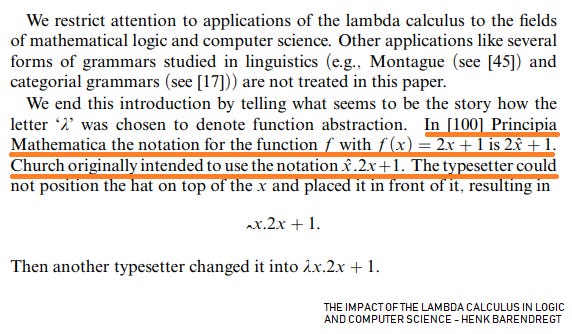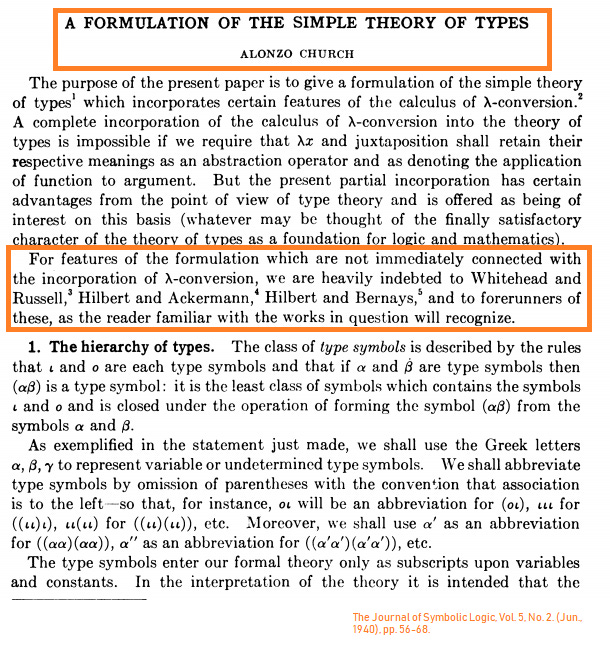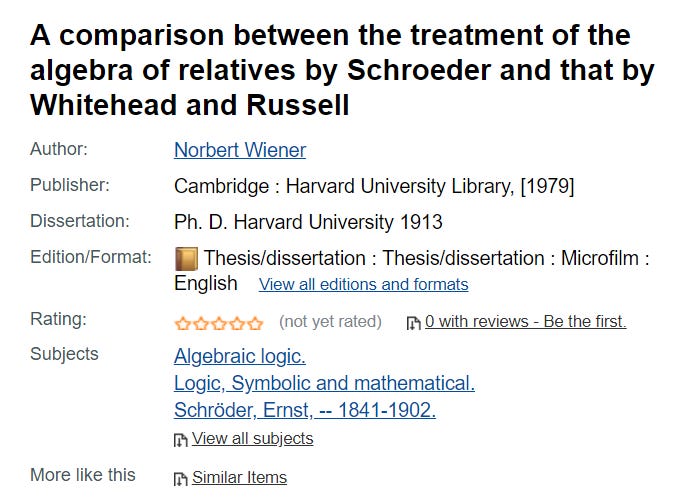The Invisible Hands Behind The Future of Artificial Intelligence
The safest general characterization of the European philosophical tradition is that it consists of a series of footnotes to Plato. — Alfred North Whitehead
To know your future your must know your past. — George Santayana
The origin of Artificial Intelligence is filled with the tales of small gods.
Small gods like Ada Lovelace, Kurt Godel, Alonzo Church, Alan Turing, Claude Shannon, John McCarthy, Andy Hillis, McCulluch, Pitts, Jerome Lettvin and Marvin Minsky.
These gods breathed life into mechanics. They also shaped each other’s histories.
Case in point, Jerome Lettvin made Danny Hillis quit neurobiology when he arrived at MIT in the 70s:
Kurt Godel published his Incompleteness Theorem in 1931.
Alonzo Church’s published his Lambda Calculus in 1936.
Warren S. McCulloch and Walter H. Pitts published their Logical Calculus of the Ideas Immanent in nervous activity in 1943.
These ideas spawned Computing and Artificial Intelligence as we know it. We’ve certainly come a long way. Google, Apple, Facebook, Netflix — they all rely on the Theses created by the Founding Fathers of AI (not to mention Einstein’s Theory of Relativity) to operate.
The Theses of the Founding Fathers of AI are all correct, but they are not a complete telling of the origins of Artificial Intelligence. Far from it.
The Input of Small Gods — Alfred North Whitehead & Bertrand Russell
The two people that Kurt Godel, Alonzo Church, Alan Turing, Claude Shannon, John, McCarthy, Andy Hillis, McCulloch, Pitts, and Marvin Minsky all have in common are Alfred North Whitehead and Bertrand Russell.
When writing their Theses and Dissertations, the Fathers of AI all referenced Alfred North Whitehead’s and Bertrand Russell’s Principia Mathematica. Why?
Principia Mathematica is one of the most celebrated works in the discipline of mathematical logic. It was ranked 23rd in the list of top 100 non-fiction books in English language of the twentieth century.
PM is known for taking 300 pages to prove 1+1=2. This monumental work in logic was so thorough that all of the Founding Fathers of AI studied it in their undergraduate work.
But don’t take my word for it.
Origins of Alonzo Church’s Lambda Calculus
Alonzo Church — inventor of the Lambda Calculus — said it best in a letter to Dr John Dawson Jr on July 25, 1983,
The common belief is that Kurt Godel’s Incompleteness Theorem completely disproved everything in Whitehead and Russell’s Principia Mathematica. Nothing could be further from the truth. In fact, Church states that his Lambda Calculus, “is based on a system of logic to which Godel’s Incompleteness does not apply.”
Software Languages Based on Church
Whitehead & Russell’s Principia Mathematica lead to Church’s Invention of the Lambda Calculus, which solved the von Neumann bottleneck.
Church himself states that he is ‘heavily indebted’ to Whitehead & Russell before everyone else as forerunners of his Thesis. In fact, Kurt Godel, Alonzo Church, Alan Turing, Claude Shannon, John McCarthy, Andy Hillis, McCulluch, Pitts, Jerome Lettvin and Marvin Minsky ALL READ Whitehead & Russell’s Principia Mathematica RELIGIOUSLY.
Huh!? I thought Church invented the Lambda Calculus solely based on Turing and Godel’s work? Nope.
(By the way, why did Church choose the notation “λ”? In [Church, 1964, §2] he stated clearly that it came from the notation “xˆ” used for class-abstraction by Whitehead and Russell, by first modifying “xˆ” to “ˆx” to distinguish function abstraction from class-abstraction, and then changing “ˆ” to “λ” for ease of printing. This origin was also reported in [Rosser, 1984, p.338]. — Why Church Chose Lambda, Grant
Church’s Invention of the Lambda Calculus lead to John Backus’ invention of Functional Programming and languages like LISP, Haskell, StandardML, Perl 6, Clojure, Rust, Elixir, etc.
But don’t take my word for it:
Who’s the father of cybernetics?
Norbert Wiener. The Same Norbert Wiener, who was instrumental in the work of gods like McCulloch, Pitts and Levitt wrote his thesis on Russell & Whitehead’s work.
An American mathematician and philosopher, as well as an esteemed professor at MIT, Norbert Weiner is widely recognized as being one of the greatest scholars in United States history. Not only did Weiner make important contributions to fields such as electronic engineering and control systems, but he is also considered by most as the founder of cybernetics. —The Father of Cybernetics, Doug West
Q: What did Whitehead and Russell’s “Principia Mathematica” achieve?
A: Whilst Whitehead and Russell failed in their main aim of deriving mathematics from logic, the logic that they developed is the mathematical logic that is used universally today.— Thony C
Turing not only read Whitehead & Russell’s PM but he also read Whitehead’s Science and The Modern World while studying at Sherborne in England between 1928 and 1930. Whitehead attended Sherborne 30 years earlier, before going onto Trinity College, Cambridge.
Still not convinced?
Turing was not the only one to ask whether a machine could model intelligent life. The notion that it might be possible to create an intelligent machine was an alluring one indeed, and it led to several subsequent developments. For instance, Arthur Samuel built a Checkers-playing program in 1952 that was the world’s first self-learning program. Later, in 1955, Newell, Simon and Shaw built Logic Theorist, which was the first program to mimic the problem-solving skills of a human and would eventually prove 38 of the first 52 theorems in PM (Genesis of AI).
Aristotelian Science lead us to try and discover the most fundamental building block of the universe (what is the substance that underlies all other substance?).
Heraclitean Science leads us to assume that change is the only fundamental building block of the universe we can be sure of (what is the only thing we can be sure of?).










